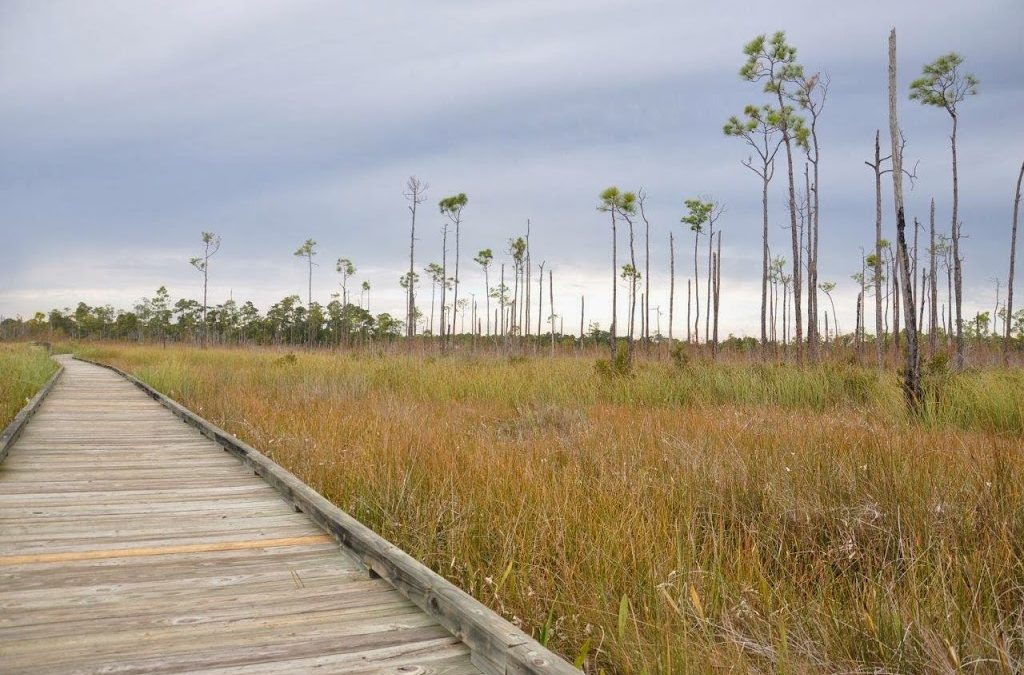
by admin | Oct 29, 2013 | Greater New Orleans
On this gorgeous fall weekend, we took advantage of the weather to revisit two of our favorite hiking trails on the northshore of Lake Pontchartrain. Despite being surrounded by towns and cars and people, the Northlake Nature Center and Big Branch Marsh National Wildlife Refuge offer quiet seclusion deep within nature. (Well, they were quiet until we arrived with our two wild kiddos!)
Part of the experience of any trip we take is getting there. The kids have come to crave their snack-filled, Scooby Doo watching car ride as the beginning of their grand adventure. Once we arrive at our first stop, their tummies are full and they have enough energy built up to run a marathon. As usual, our five-year-old darted out of the car before we even stopped the engine. He was on a hunt for lizards, something he has become a pro at catching.
Northlake Nature Center

It’s been more than a year since we last visited the Northlake Nature Center, located across the street from Fountainbleau State Park. The initial entrance looked the same. But as we started walking into the woods, we noticed many improvements to the boardwalk and new trails weaving in between old ones. It was shaded and cool in the forest. And although we caught sight of monstrous mosquitoes, they seemed to spare us from harm during our mid-afternoon walk.
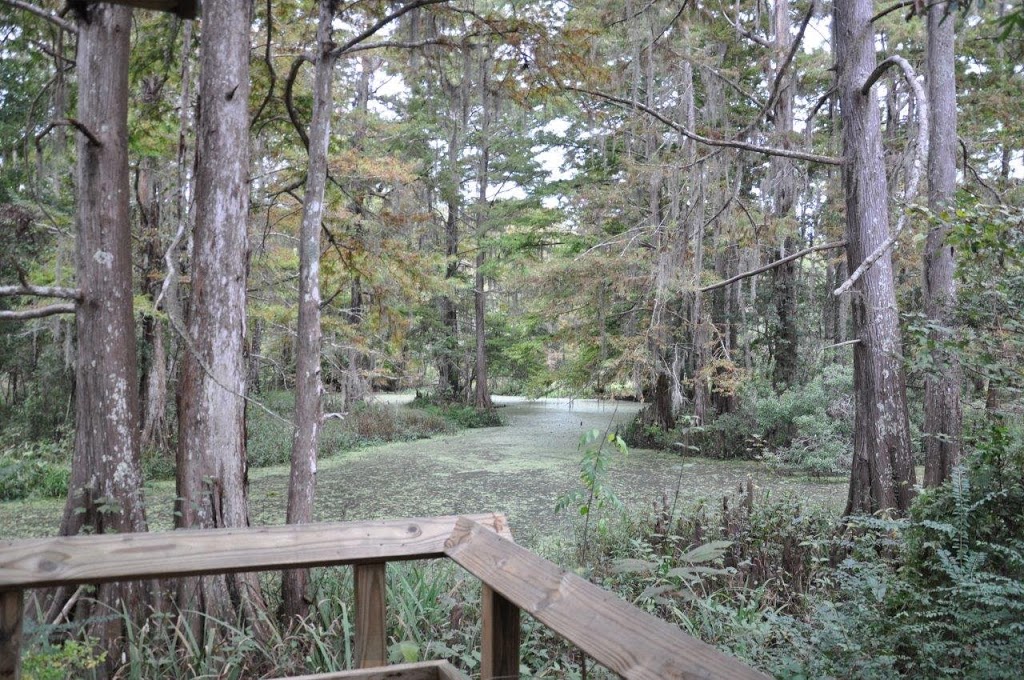
Engraved signs shaped like rocks provided a non-intrusive education on the area’s wide variety of trees and their names. At the beaver pond, our oldest spotted the distinctive head of a red-eared slider turtle. As we watched, several more popped up around him. From here, we took the Eagle Trail, which led us past a small cypress-tupelo swamp. It then traveled through a pine forest to the edge of the Nature Center near Pelican Park (a local ball park).
The path changed many times, from the initial boardwalk to a cushy pine needle pathway. Then it became a paved portion of a bicycle trail followed by a wide road lined with large rocks. It began to rain on us at this point, and the kids tucked away inside their strollers. We turned onto the last leg of the trail and ran our way back to the beginning boardwalk. When we reached the beaver pond again, they sprinted and squealed their way to the car, spooking any wild animals that may have been lurking in the shadows.
Big Branch Marsh National Wildlife Refuge
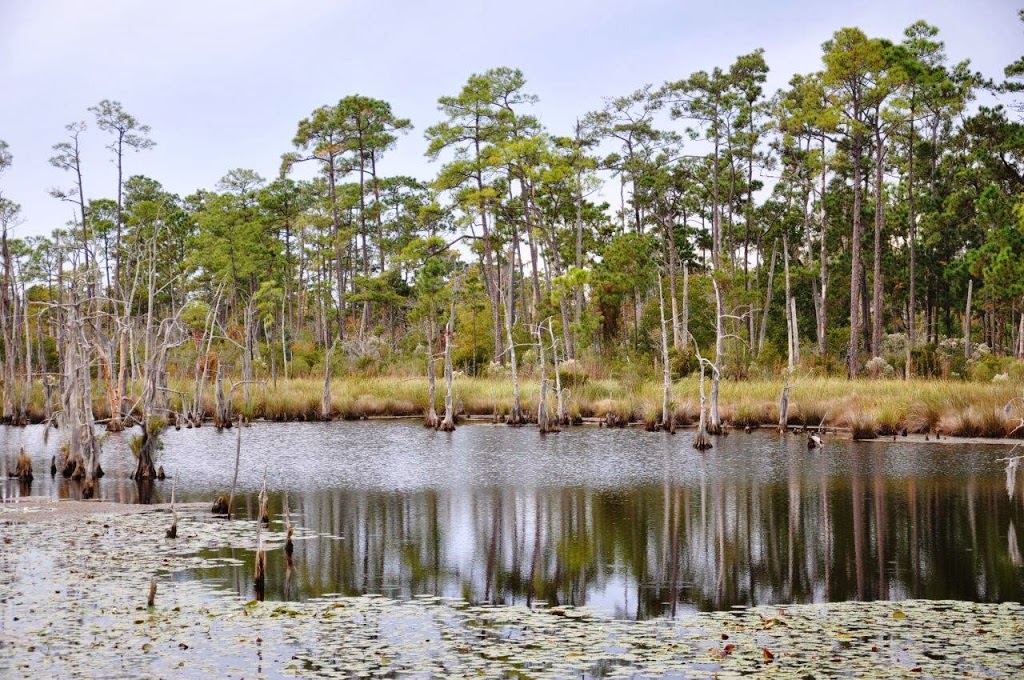
From the Nature Center, we headed toward Lacombe and the remote Big Branch Marsh National Wildlife Refuge. As it was Sunday, the Visitor’s Center was closed. This hands-on display inside an old church is definitely worth a visit if you haven’t been before. The main hiking path in Big Branch is the Boy Scout Road boardwalk and trail, located off Transmitter Road. The boardwalk itself begins through one of the most peaceful settings in south Louisiana. A scattered pine forest opens up into a marsh decorated with lily pads and their lovely white blooms. Although only a 1/4-mile long, the boardwalk brings you to a magical place not often experienced. Unfortunately the rain picked back up, and once again we were deterred from venturing out along the 4.5-mile Boy Scout Road leading to Bayou Lacombe. Perhaps next time, we’ll discover what lies beyond the boardwalk…
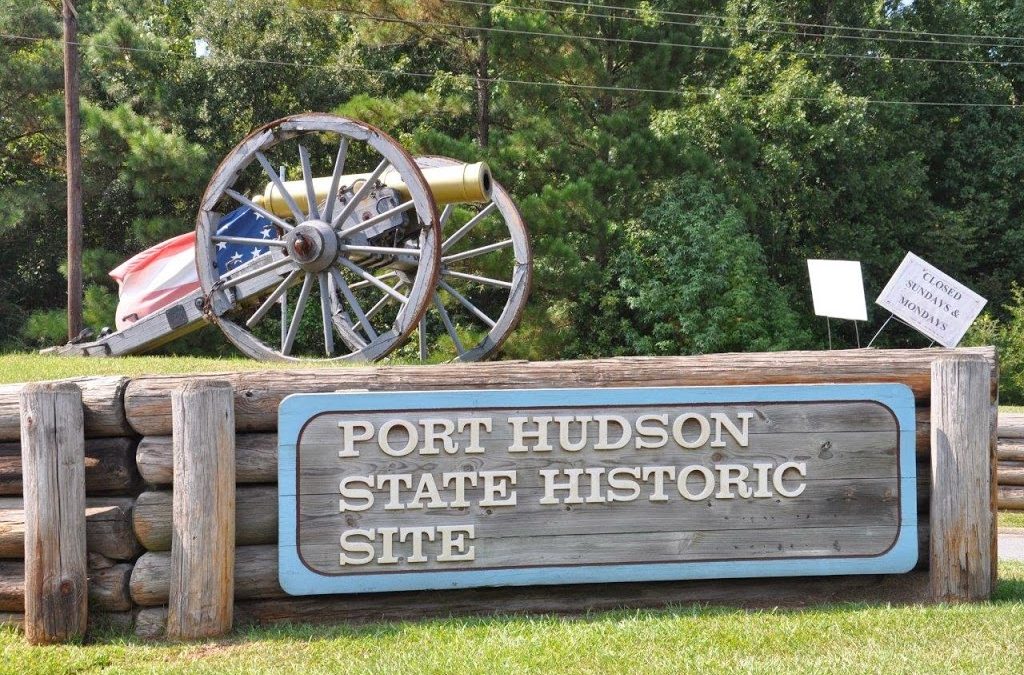
by admin | Oct 8, 2013 | Greater Baton Rouge
On previous trips to St. Francisville, we always head straight for the historic town. We walk the shaded main streets and shop at Grandmother’s Buttons before setting off to tour a nearby plantation. Although we see the sign for Port Hudson State Historic Site as we pass, we never stop. There’s always this slight aversion to taking toddlers to a battle site. On our most recent trip, though, we had a change of heart and decided it was finally time for us to veer off the road and check it out.
Port Hudson State Historic Site

As is most often the case, we were pleasantly surprised by our decision. A model state facility, Port Hudson was immaculately kept up. The site has 6 miles of wipe-open trails for exploring and a child-friendly ranger who welcomed the kids and their insanity with open arms. An informative exhibit inside the museum offered miniature models of soldiers and horses that captured the kids’ imaginations. Meanwhile, the sad details of the actual battle were left to those old enough to read.
The longest siege in American military history took place at Port Hudson, where for 48 days 6,800 Confederate soldiers held off 30,000 Union troops. There were thousands of casualties before the Confederates finally surrendered after hearing that Vicksburg had surrendered. The site is also the first battle in which African-American troops from Louisiana were allowed to participate. They fought for the Union army against the Confederates. Port Hudson later became a recruiting center for African-American troops.

After brushing up on our history, we watched the ranger let the kids try on a canteen and practice moving a small cannon. Then we headed outside to the trail. It first led us through an open field to original cannons used in the Civil War battle here. Then, looping around, it immersed us into a shady forest with giant spiders weaving webs right over our heads. There were also small bluffs offering elevation changes not often seen in Louisiana.
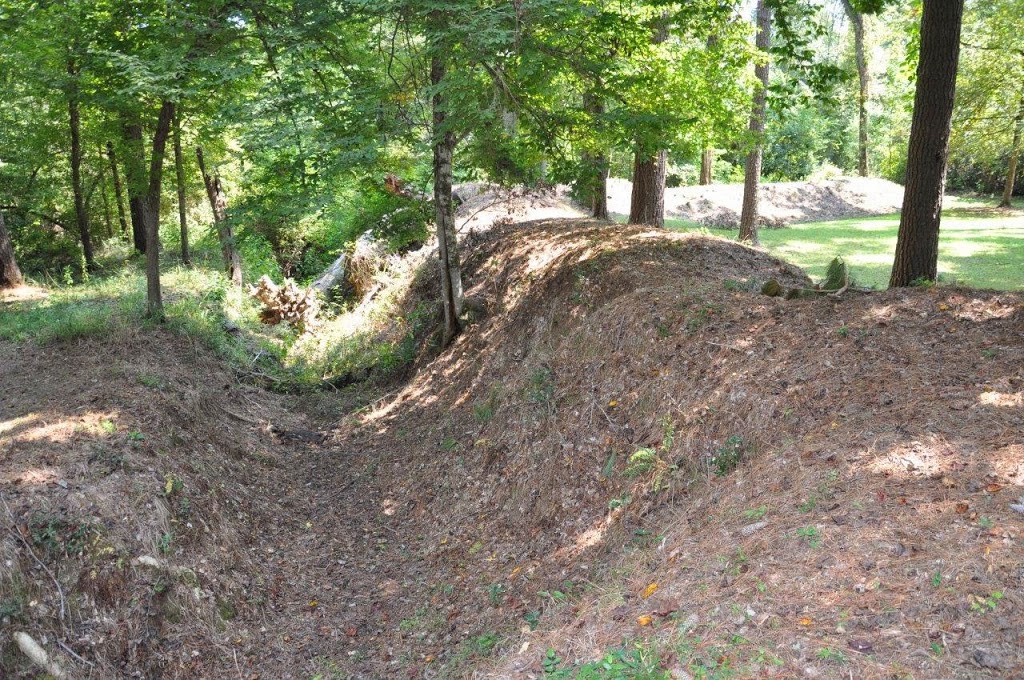
At Fort Desperate, an elevated boardwalk led us over the earthen hills built by the soldiers. Signs spoke of sharpshooters watching Union soldiers as they dug trenches to get closer to their enemy. We then crossed Foster Creek and found Fort Babcock, another series of earthen hills left behind to nature. Tiny frogs and lizards jumped and scurried about through the fallen leaves. While the kids tested their bug-catching skills, we tried to imagine thousands of young soldiers hiding here in these woods 150 years ago.
St. Francisville

The day was still early when we left Port Hudson, so we headed toward St. Francisville to pick up a bite to eat at Magnolia Cafe. On a whim, we decided to drive to the edge of town to view the Mississippi River. Surprisingly, the road leads nearly straight up to the water’s edge. From here, we turned back and stopped off to investigate an old train car left behind from the West Feliciana Railroad. The kids climbed over every inch of it before we herded them back into the car to find out if the road was open to Cat Island.
Cat Island National Wildlife Refuge
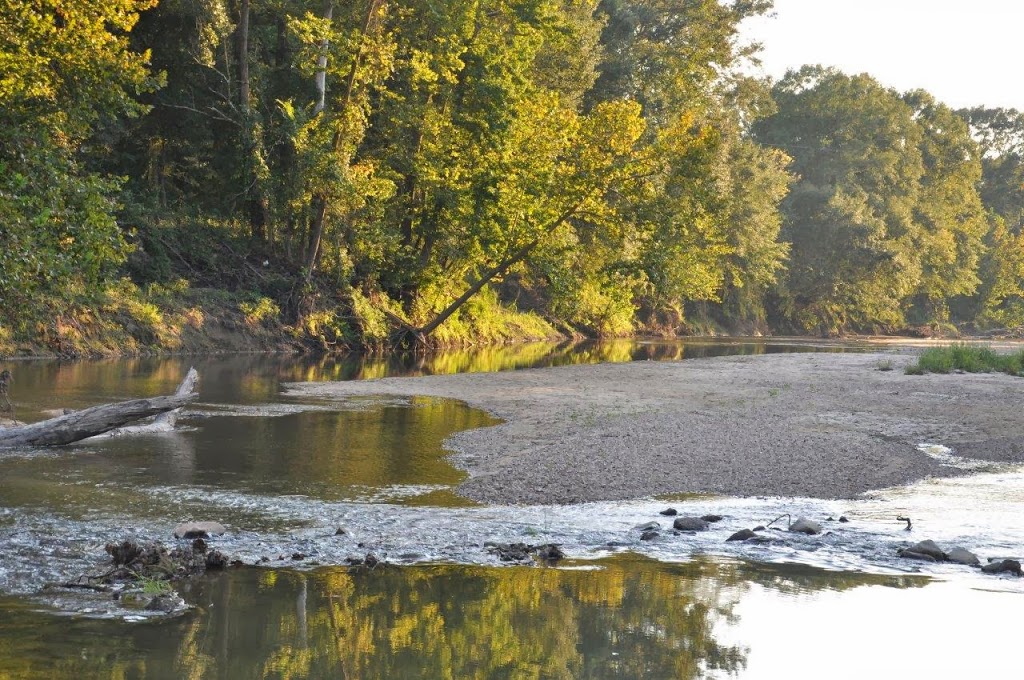
As we crossed the low-lying bridge over a local river, we were excited to realize that the road was not flooded as it had been on previous visits. A family jumped across rocks in the scenic river while we headed out into the country. We passed several sightings of grazing deer to the dirt road that leads to Cat Island National Wildlife Refuge. A lack of signage and our own poor guessing at directions helped us “get lost in Louisiana” yet again before we finally found our way to the destination.
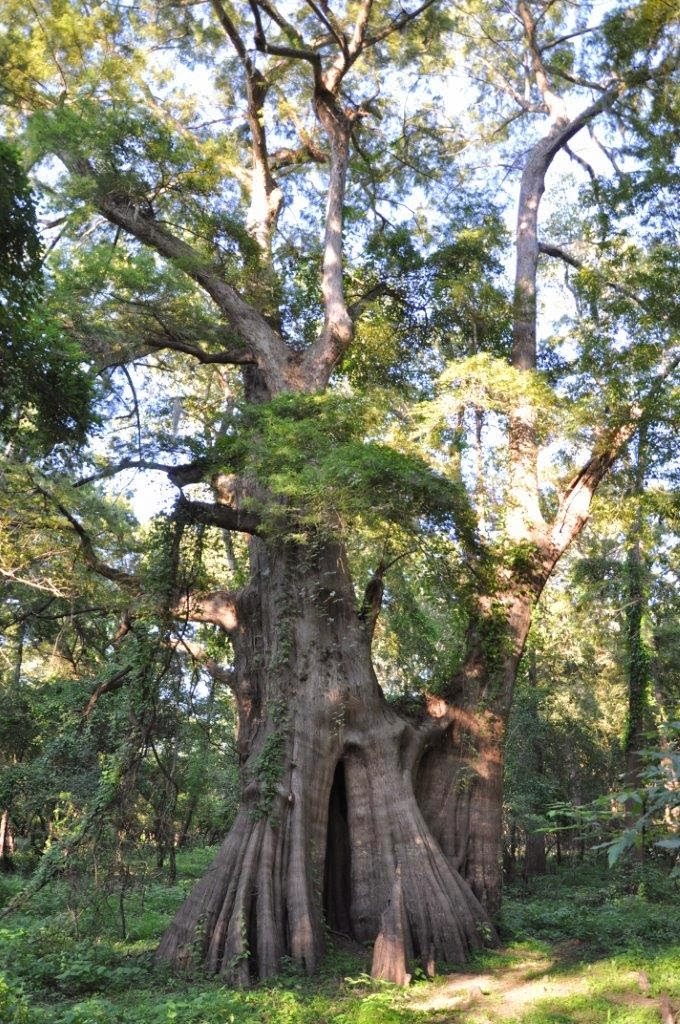
Inside the refuge, we parked at the trailhead for the old cypress trees and walked the short distance to the viewing platform for the National Champion Bald Cypress. The enormous, ancient tree dominates the old growth forest around it. We took our time admiring this grandfather of trees, which spends half of every year swimming in the floodwaters of the Mississippi River. It’s a sight to see and the perfect ending to our day of adventure.











